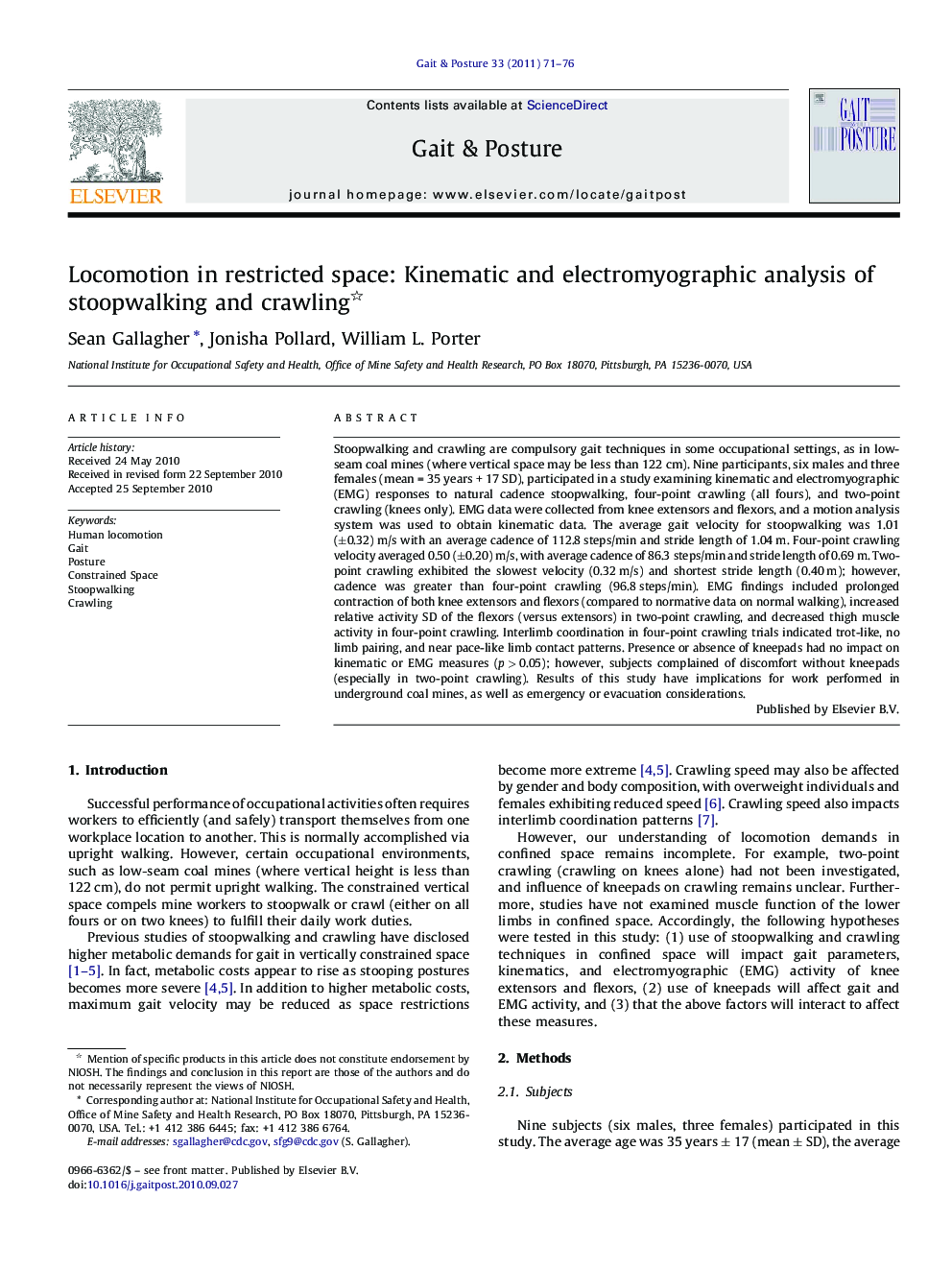| Article ID | Journal | Published Year | Pages | File Type |
|---|---|---|---|---|
| 6207635 | Gait & Posture | 2011 | 6 Pages |
Stoopwalking and crawling are compulsory gait techniques in some occupational settings, as in low-seam coal mines (where vertical space may be less than 122 cm). Nine participants, six males and three females (mean = 35 years + 17 SD), participated in a study examining kinematic and electromyographic (EMG) responses to natural cadence stoopwalking, four-point crawling (all fours), and two-point crawling (knees only). EMG data were collected from knee extensors and flexors, and a motion analysis system was used to obtain kinematic data. The average gait velocity for stoopwalking was 1.01 (±0.32) m/s with an average cadence of 112.8 steps/min and stride length of 1.04 m. Four-point crawling velocity averaged 0.50 (±0.20) m/s, with average cadence of 86.3 steps/min and stride length of 0.69 m. Two-point crawling exhibited the slowest velocity (0.32 m/s) and shortest stride length (0.40 m); however, cadence was greater than four-point crawling (96.8 steps/min). EMG findings included prolonged contraction of both knee extensors and flexors (compared to normative data on normal walking), increased relative activity SD of the flexors (versus extensors) in two-point crawling, and decreased thigh muscle activity in four-point crawling. Interlimb coordination in four-point crawling trials indicated trot-like, no limb pairing, and near pace-like limb contact patterns. Presence or absence of kneepads had no impact on kinematic or EMG measures (p > 0.05); however, subjects complained of discomfort without kneepads (especially in two-point crawling). Results of this study have implications for work performed in underground coal mines, as well as emergency or evacuation considerations.
